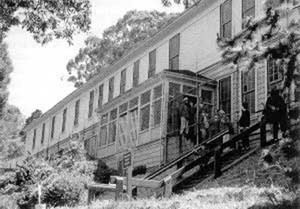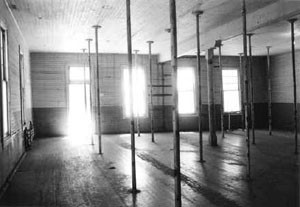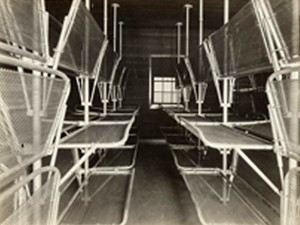Angel Island, San Francisco Bay, California
INTERNMENT CAMPS

An aerial view of the Immigration Station, administration building in foreground, dentention barracks on right, hospital to the left, and Julia Morgan-designed employee cottages at the top of the photo. Source: California Department of Parks and Recreation.
Known as the “Ellis Island of the West,” this 740 acre island in San Francisco Bay was originally built as an immigration station in 1910. During World War I, German citizens, most from ships harbored along the west coast, were temporarily interned here as “enemy aliens,” until they were sent to permanent detention facilities in North Carolina.
In December 1939, the crew of the German liner, S.S. Columbus, scuttled her rather than risk capture by the British. The passengers and approximately 400 man crew turned themselves over to a U.S. ship, and were taken to Ellis Island and then on to Angel Island. They remained, as “guests” of the government, until they were sent to Fort Stanton, New Mexico, in 1941.
In 1941, the Immigration Service turned the facility over to the Army. A prisoner of war processing center was established, using the old barracks in what was now known as the North Garrison of Fort McDowell. Besides Japanese and German prisoners of war, civilian “enemy aliens” of German, Italian and Japanese ethnicity were housed here, as were civilian internees from Hawaii, prior to being transferred to other facilities.
- An aerial view of the Immigration Station, administration building in foreground, dentention barracks on right, hospital to the left, and Julia Morgan-designed employee cottages at the top of the photo. Source: California Department of Parks and Recreation.
- Detainee barracks at the Angel Island Immigration Station. (Angel Island Foundation)
- Men’s Barracks at North Garrison, Fort McDowell, Angel Island, CA Source: Angel Island State Park Website
- Men’s Barracks at North Garrison, Fort McDowell, Angel Island, CA Source: Angel Island State Park Website



